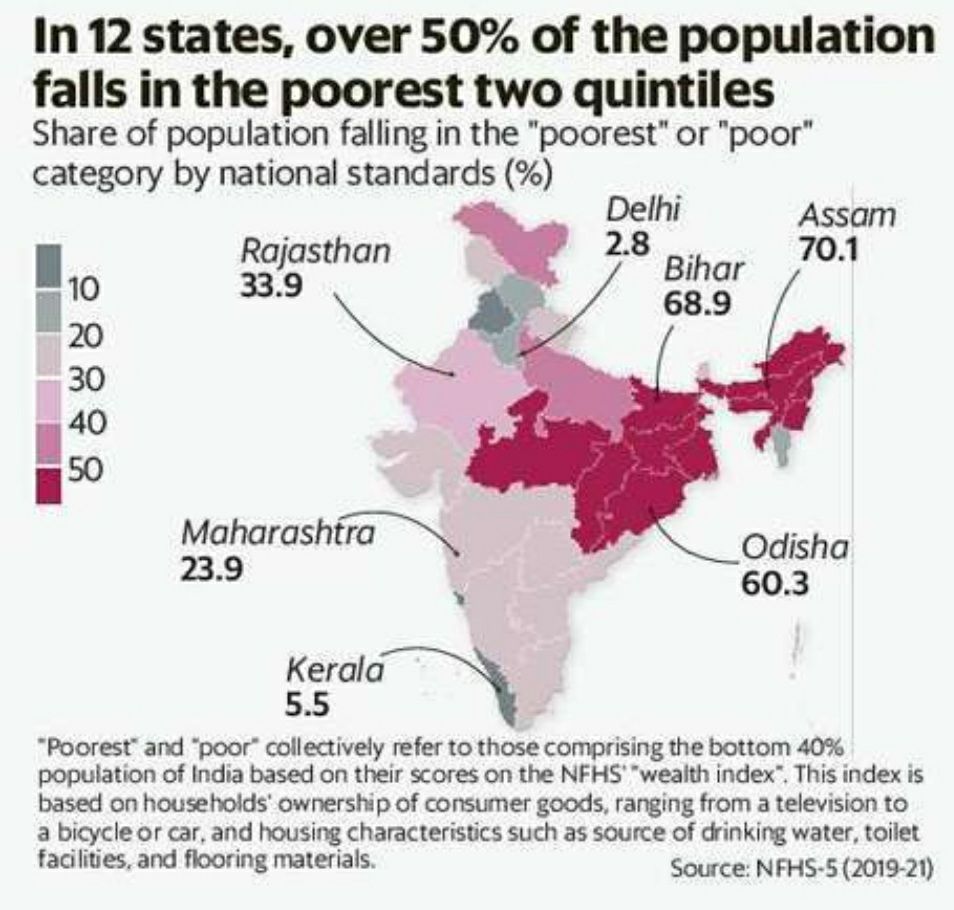ForumIAS announcing GS Foundation Program for UPSC CSE 2025-26 from 27th May. Click Here for more information.
What is the News?
According to the National Family Health Survey(NFHS) Wealth Index, a vast chunk of India’s poor in terms of ownership of consumer goods and household assets resides in a handful of eastern and northeastern states.
What is the Wealth Index?
The wealth index is a measure of living standards based on households’ ownership of items such as televisions to housing features such as drinking water sources. The population is divided into five equally-sized groups based on the index. The top 20% form the richest, and the bottom 20% the poorest quintile.
What are the key findings of the index?
Wealth distribution across the country

For uniform wealth distribution across the country, any demographic or state would need to have 20% of their population falling in each of the five wealth quintiles. However, that’s far from true.
India’s urban population is tilted towards the top quintiles indicating a generally higher standard of living, but it has a striking contrast with rural areas. For instance, about 74% of urban Indians belong to the two richest quintiles (top 40% of the overall population). On the other hand, only one in four rural Indians falls into these groups.
Twelve states and Union territories have more than half of their population in the lowest two wealth quintiles. Assam has the highest such share (70%), followed by Bihar (69%) and Jharkhand (68%). Barring Mizoram and Sikkim, all northeastern states fall under this category.
District Wise
Mahe District of Puducherry has the smallest share of the poor (0.1%), while Supaul district of Bihar has the highest (91.9%).
In Kerala, most districts have less than 10% poor population. The trend is similar in the districts of Punjab and Haryana.
Religion and Caste wise
Hindus and Muslims have a wealth distribution fairly in line with India’s national average with about 20% of their populations in each quintile. Christians have a slightly higher share of the population (26%) in the highest wealth quintile. Only 1.6% of Sikhs fall in the lowest wealth quintile.
The caste-wise distribution is far more stark. Over 70% of the scheduled tribe population falls in the lowest two quintiles and the same is true for 49% of the scheduled caste population.
Correlation between Education and Wealth
The report shows a strong correlation between education and wealth status.
BPL Households
In India, 45% of households have Below Poverty Line(BPL) cards which are given to families adjudged to be below the poverty line. However, in some states, the figure exceeds 80%:Andhra Pradesh has the highest share (90%), followed by Chhattisgarh (87%), Telangana (85%), and Karnataka (79%). Among larger states, Punjab has the lowest share (19%).
Source: The post is based on the article “How India fares on NFHS Wealth Index, in 5 charts” published in Livemint on 11th May 2022.




